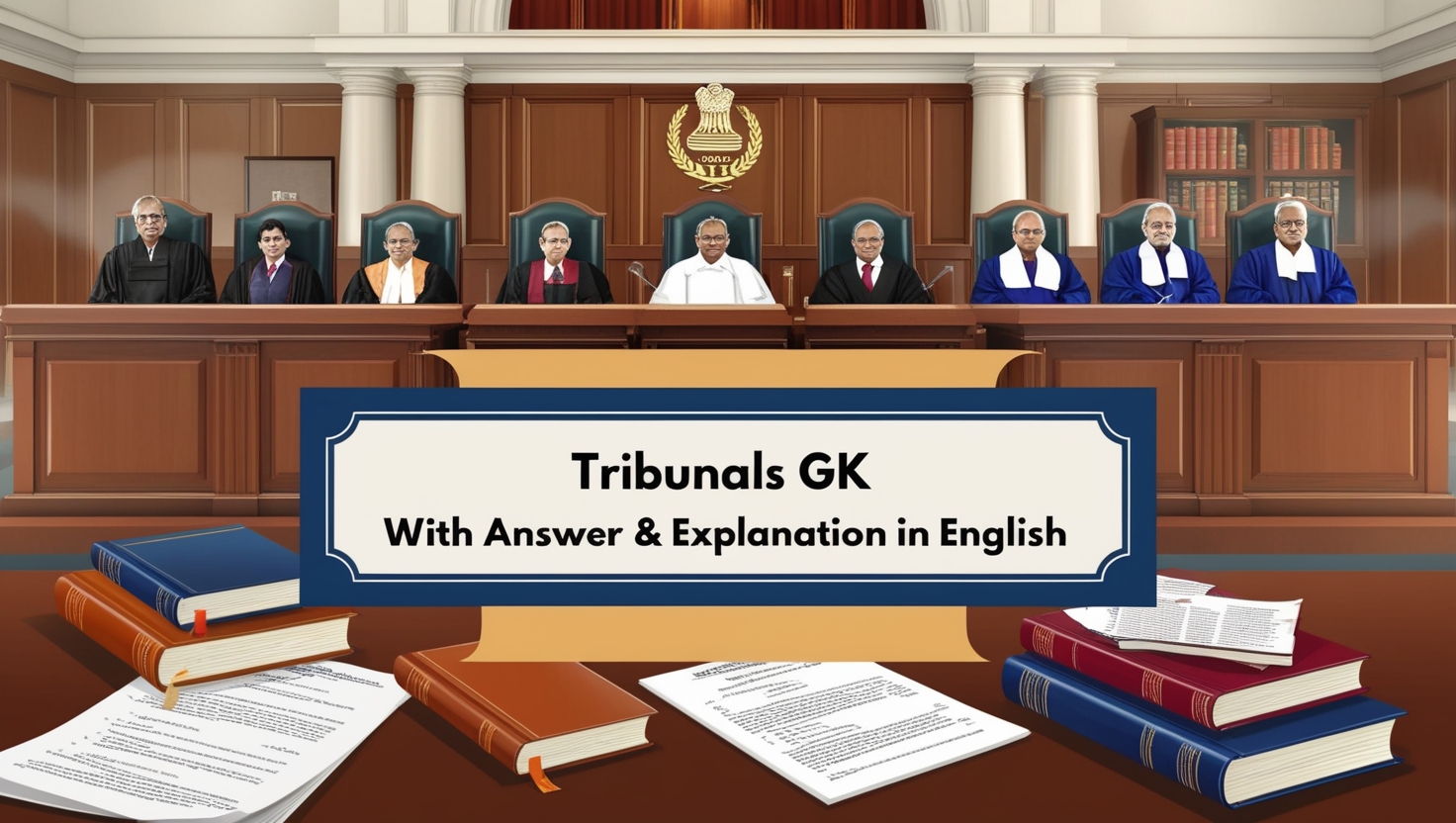
Tribunals play a crucial role in India’s judicial system, offering a specialized forum for resolving disputes related to specific areas like taxation, labor, and administrative issues. In this article, titled Tribunals GK MCQs With Answer & Explanation in English, you will explore a series of multiple-choice questions designed to deepen your understanding of tribunals, their functions, and their significance.
Each question comes with detailed answers and explanations to help you master this important topic.
1. The 42nd Amendment Act of 1976 added which of the following parts to the Constitution of India?
- Part XI
- Part XIII
- Part XIV-A
- Part XIV-B
Show Answer
Answer: Part XIV-A
The 42nd Amendment Act of 1976 introduced a new Part XIV-A into the Indian Constitution, which deals with the establishment and functioning of tribunals. Prior to this amendment, the Constitution did not contain specific provisions regarding tribunals.
2. Which of the following articles deal with the administrative tribunals?
- Article 323 A
- Article 323 B
- Article 324
- Article 325
Show Answer
Answer: Article 323 A
Part XIV-A of the Constitution of India, titled ‘Tribunals,’ comprises only two Articles: Article 323-A and Article 323-B. Article 323-A pertains to administrative tribunals, while Article 323-B deals with tribunals for matters other than administrative disputes.
3. Which of the following appoints the chairman and members of the Joint Administrative Tribunal (JAT)?
- President
- Prime Minister
- Governor
- Chief Minister
Show Answer
Answer: President
The Administrative Tribunals Act of 1985 provides for the creation of Joint Administrative Tribunals (JAT) that serve two or more states. The chairman and members of a JAT are appointed by the President of India after consulting with the governors of the concerned states. These tribunals help address specific inter-state issues.
4. Which of the following is empowered to establish administrative tribunals?
- President
- Parliament
- Supreme Court
- Rajya Sabha
Show Answer
Answer: Parliament
Article 323-A of the Indian Constitution empowers the Parliament to establish administrative tribunals. These tribunals are responsible for adjudicating disputes related to the recruitment and terms of service of individuals appointed to public services at various levels, including those of the Central government, state governments, local bodies, public corporations, and other public authorities.
5. In which year was the Administrative Tribunals Act passed?
- 1960
- 1970
- 1975
- 1985
Show Answer
Answer: 1985
The Administrative Tribunals Act was enacted in 1985 by the Indian Parliament. It grants the Central government the authority to establish the Central Administrative Tribunal (CAT) and allows state governments to establish State Administrative Tribunals (SATs) to deal with service-related disputes.
6. What is the sanctioned strength of the Central Administrative Tribunal (CAT) excluding the chairman?
- 64
- 65
- 66
- 67
Show Answer
Answer: 65
The Central Administrative Tribunal (CAT) consists of a sanctioned strength of 65 members, excluding the chairman. These members are drawn from both judicial and administrative backgrounds and are appointed by the President of India.
7. What is the maximum term of the chairman of the Central Administrative Tribunal (CAT)?
- 3 years
- 4 years
- 5 years
- 6 years
Show Answer
Answer: 5 years
The chairman of the Central Administrative Tribunal (CAT) holds office for a term of five years or until reaching the age of 65, whichever comes earlier. For other members of the CAT, the age limit is set at 62 years, whichever is earlier.
8. Where was the principal bench of the Central Administrative Tribunal (CAT) set up in 1985?
- Delhi
- Hyderabad
- Mumbai
- Bhopal
Show Answer
Answer: Delhi
The Central Administrative Tribunal (CAT) was established in 1985 by the Indian government, with its principal bench located in Delhi. It also has additional benches located in various states. These benches conduct circuit sittings at different high court locations to make the process more accessible to individuals in different regions.
9. Which of the following appoints the chairman and members of the State Administrative Tribunals (SATs)?
- President
- Governor
- Prime Minister
- Parliament
Show Answer
Answer: President
The chairman and members of the State Administrative Tribunals (SATs) are appointed by the President of India after consulting with the respective state’s governor. SATs are responsible for addressing service-related disputes at the state level.
10. What is the primary purpose of setting up tribunals in India?
- Speedy resolution of disputes
- Providing legal education
- Conducting criminal investigations
- Issuing executive orders
Show Answer
Answer: Speedy resolution of disputes
Tribunals are established to provide a faster and more specialized mechanism for resolving certain types of disputes, ensuring a quicker and efficient legal process.







